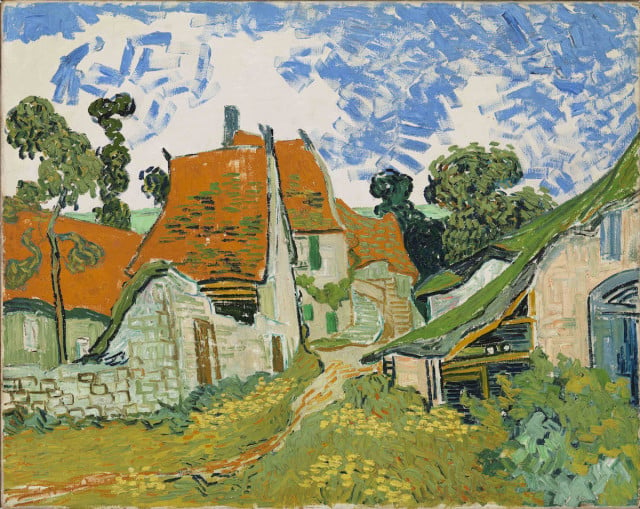Art & Exhibitions
Did Vincent van Gogh Predict the Ozone Hole?
THE DAILY PIC: In 'Unfinished' at the Met, incompletion is a sign of calamity.

THE DAILY PIC: In 'Unfinished' at the Met, incompletion is a sign of calamity.


THE DAILY PIC (#1557): Vincent van Gogh painted this streetscape in Auvers-sur-Oise in 1890; his death may have prevented him from finishing it. It’s a key work in the Met Breuer show called “Unfinished: Thoughts Left Visible,” because it is both incomplete and the end-point of the style known as non-finito, invented 300 years earlier in Venice by Titian. It proves how utterly different the two concepts are.
For all the newfound brushiness of van Gogh’s art (he’d only discovered Impressionism a few years earlier), he still wanted each of his pictures to be a finished representation of its subject, as seen through the lens of his freeform style. That’s what we get in the bottom half of this picture. Its top half, although not totally un-van-Gogh-ish in look, is in fact simply unfinished – it fails to represent the sky according to any terms van Gogh would have understood.
Or rather, in the terms that he knew, it had to represent a sky with holes in it, not simply a white field with blue marks. Non-finito stands for the outstanding, unlikely power of paint to represent; the simply unfinished, on the contrary, puts representation, and the world it depicts, at risk of breakdown. In his delicate psychic state, van Gogh would have grasped the distinction. Florid non-finito was a sign of his will to live; it took death to bring on the unfinished. (Ateneum Art Museum, Finnish National Gallery, Helsinki; Antell Collection)
For a full survey of past Daily Pics visit blakegopnik.com/archive.